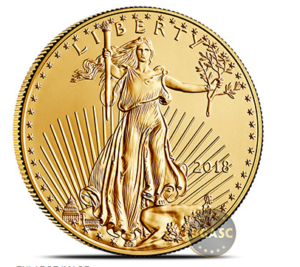
What Does the Gold Silver Ratio at 80-1 Mean?
The gold silver ratio is currently at the high end of a 100 year trading range.
Over the past one hundred years the gold silver ratio has traded between about 16-1 to 100-1. The gold silver ratio measures how many ounces of silver would be required to buy an ounce of gold. For most of the 20th century and the beginning of the 21st century, the gold silver ratio has been over 40-1 and for much of the past fifty years over 50-1.
Any divergence in the gold silver ratio causes analysts to suspect or conclude that silver is undervalued relative to gold or vice versa, based on historic norms. This view typically is grounded in the concept that silver is about seven to twenty times more plentiful than gold in the ground or a range that might indicate that silver is even less plentiful relative to gold in the amounts of each metal above ground and available to trade. This relative rarity view may, however, be too simplistic and not explain adequately why the gold silver ratio has far exceeded a ratio of 7-20 to one over the past one hundred years.
While gold and silver have both served as monetary metals in their history, currently only gold is held in substantial amounts by the world’s central banks. Gold and silver both have unique properties making them valuable in industrial applications. Silver’s industrial demand, however, is estimated to constitute 50-70% of overall silver demand, while gold’s industrial uses are estimated to make up about 10-15% of overall demand. Thus, gold investment demand is a much larger percentage of overall gold demand than is silver’s investment demand percentage of overall silver demand. It seems that metals that trade for investment garner a premium over those that trade simply for industrial uses. While gold and silver both claim investment premiums, gold has a higher percentage of investment demand than silver and perhaps has a higher built in premium than silver.
Both gold and silver are attractive and prized for adornment. About 50% of annual gold mining production goes to the creation of gold jewelry, which its purchasers also view as a form of investment. About 15-20% of annual silver demand goes into the production of jewelry.
Since gold and silver have distinct properties and colors, their relative rarities are not very relevant in determining their values. Each metal is valued for its own properties and potential uses. There are enough differences in the two metal to conclude easily that silver is not a gold substitute or even a cheaper version of gold. Silver is its own metal that trades on its own supply and demand criteria. Gold also trades on its own supply and demand fundamentals (including synthetic paper and digital gold and silver demand). Because of this dynamic, the two metals haven’t traded relative to each other in a tight range over the past one hundred years, but rather there have been periods of wide divergences in the gold silver ratio.
The Gold Silver Directional Correlation
The correlation in the direction of the price of gold and silver is far stronger than any price ratio between gold and silver. It’s the investment components of gold and silver that are highly correlated. Thus, when investment demand for gold is strong, it generally is strong for silver and vice versa. Silver also has an added element of speculative investment demand because it is priced much less expensive per ounce. When both gold and silver rise significantly, silver tends to go higher on a relative basis than gold.
Indeed, the times when the gold silver ratio dropped dramatically over the past forty years were during periods when both gold and silver were rising rapidly – in 1980 and 2011 when both gold and silver hit all-time highs.
The case for silver and the case for gold perhaps need to be made independent of each other. While they share a similar investment component, even their investor profiles are different. Gold bullion tends to be favored not only by central banks, but by ultra wealthy individuals over silver, in part because it takes up less room to store gold and is deemed to be the more valuable metal. Silver, on the other hand, is favored by the common man, which means in a time of crisis there may be greater silver demand coming from a greater number of people who can’t afford or perceive they can’t afford gold.
Since the gold silver ratios over the past one hundred years may only be a guide to the future direction of the gold silver ratio, many precious metals investors may choose to buy more silver than gold on the expectation that gold silver ratio is destined to go lower, while others may see gold as a more solid bet and not pay too much attention to the gold silver ratio.
In most cases, precious metal investors tend to have both gold and silver in their portfolios in amounts reflecting, in part, their views on the direction of the gold silver ratio.
Gold and Silver Eagles are the most popular ways that gold and silver investors gain exposure to physical precious metals.


